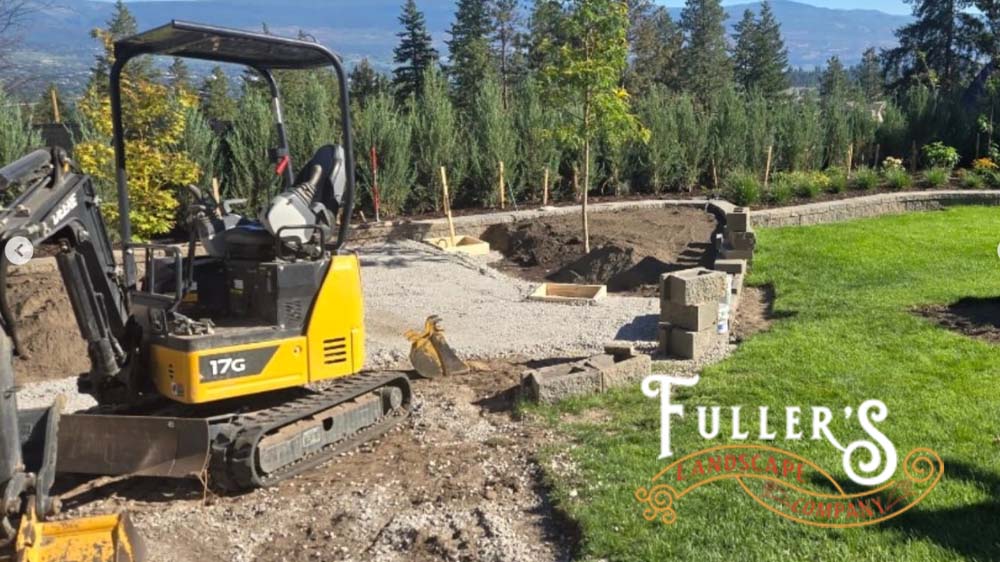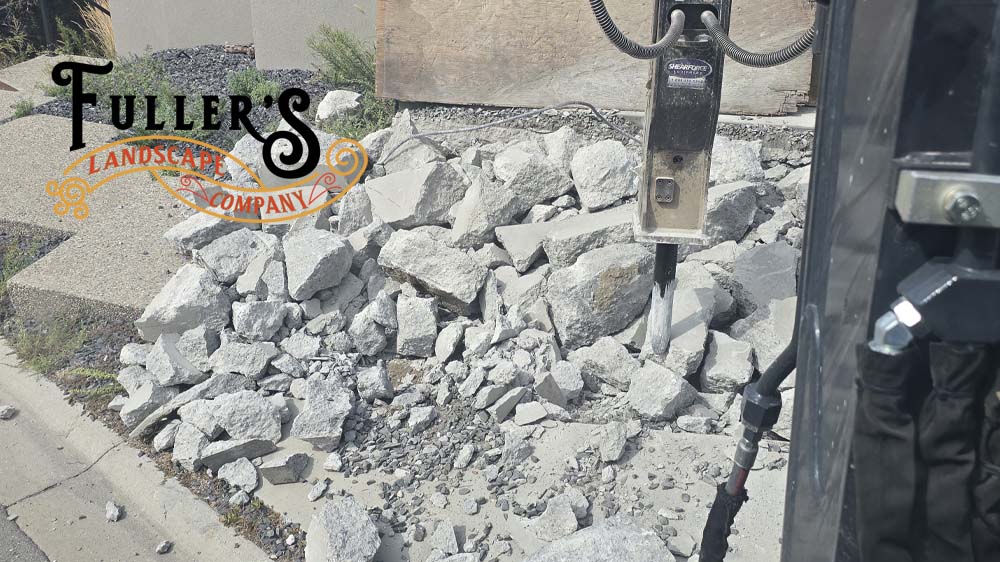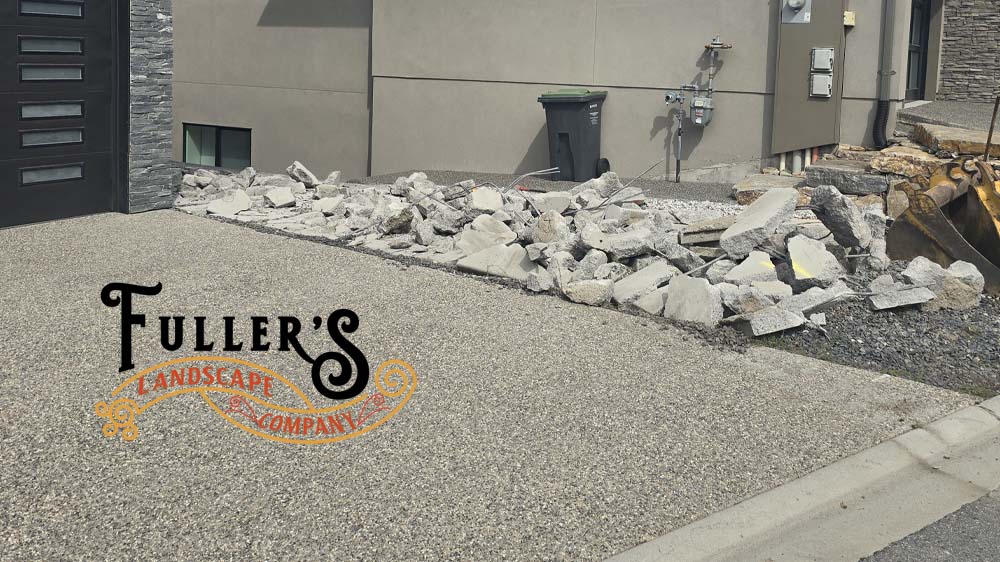Winter presents unique challenges for contractors, builders, and developers working with concrete in Kelowna, BC. As the temperatures drop, concrete projects like demolition, framing, and slab preparation require special considerations to ensure quality and durability. Inadequate handling of concrete in cold weather can lead to cracks, scaling, and even structural failure over time, affecting the integrity of a project and necessitating costly repairs. To help you navigate these challenges, we’ve compiled essential winter concrete practices tailored to demolition, framing, and slab preparation.
Winter Concrete Demolition Tips
Concrete demolition can be complex during colder months due to factors like freezing temperatures and reduced daylight. Here’s how to mitigate risks and keep your project on schedule:
- Schedule Strategically: Plan demolition work during the warmest part of the day when temperatures are slightly higher. This helps prevent equipment from freezing and minimizes the risk of concrete becoming brittle.
- Use Cold-Weather Equipment: Opt for demolition tools and machinery that are built to withstand colder temperatures. Hydraulic hammers, saws, and pneumatic tools can seize up if not prepared for winter conditions, so regular maintenance and inspection are crucial.
- Protect the Site from Frost: Frost can make concrete slabs more brittle and prone to shattering. Lay down insulated tarps over areas to be demolished to prevent frost from forming. This helps ensure the concrete breaks as expected, without unexpected fragments.
- Safe Disposal of Concrete Debris: Cold weather can make debris removal more difficult. Make arrangements with waste management services to prevent delays, as demand for waste removal services may be higher during winter.
Effective Winter Framing Techniques

Framing for concrete slabs during winter requires adjustments to stabilize the framework and ensure it withstands fluctuating temperatures.
- Use Frost-Resistant Formwork: Choose formwork materials that are resistant to freezing. Wooden frames can warp or crack in freezing conditions, so consider using insulated or plastic-based formwork for a stable framework.
- Apply Insulation to Formwork: Adding insulation around formwork can prevent the ground and concrete from freezing prematurely. Rigid foam or insulated blankets around the perimeter of the formwork can help maintain consistent curing temperatures.
- Add Heating Elements for Large Projects: For larger framing projects, installing heating cables or blankets can be essential. They keep concrete temperatures above freezing during the pour, reducing the likelihood of cracks and other curing issues.
- Ensure Proper Ventilation: Cold-weather framing often requires using temporary enclosures. Ensure adequate ventilation to prevent moisture buildup inside the structure, which could affect the curing process and compromise structural integrity.
Slab Preparation and Pouring in Cold Weather
Pouring concrete in winter is one of the biggest challenges in concrete work. Proper preparation and management are essential for preventing freezing and ensuring a durable finish.
- Use Hot Water in the Concrete Mix: Using hot water in the mix can help maintain the concrete’s temperature during the pour, giving it more time to set and reducing the chance of freezing.
- Consider Accelerating Admixtures: Incorporate cold-weather admixtures, like calcium chloride, which can help accelerate curing times. However, ensure that the chosen admixtures are compatible with any reinforcement in the concrete to avoid corrosion.
- Prepare the Subgrade Thoroughly: Frozen ground can cause severe issues for slab preparation. Remove any snow or ice from the subgrade, and consider pre-heating it to prevent issues during the pour. Laying down insulating blankets several days before can also prevent frost from penetrating the subgrade.
- Enclose the Site When Possible: For consistent temperature control, set up a temporary enclosure around the pour area and use heating elements to maintain a steady, above-freezing temperature. This is particularly helpful for large-scale pours where exposure to cold can disrupt the process.
Managing Curing and Protection for Winter Concrete in Kelowna
Curing is the most critical part of any concrete work, and winter temperatures add a layer of complexity to the process.
- Maintain a Stable Temperature: Concrete requires a consistent temperature (ideally above 10°C) to cure correctly. Use insulated blankets, curing blankets, or heated enclosures to keep the slab at a safe temperature for the initial curing phase.
- Monitor Moisture Levels Carefully: Winter air is often dryer, which can lead to rapid moisture loss. Apply curing compounds or water-retaining blankets to prevent excessive moisture loss, which can lead to cracking and compromised durability.
- Gradual Temperature Adjustments: When heating or cooling down a cured slab, make adjustments gradually to prevent thermal shock, which can cause surface cracks. This is particularly important when temperatures shift from freezing at night to warmer conditions during the day.
- Regular Testing and Monitoring: Invest in thermometers and sensors to monitor both surface and internal temperatures of the concrete. Keeping track of temperature fluctuations allows you to make real-time adjustments and avoid potential curing issues.
Planning and Professionalism for Cold-Weather Concrete Success
Winter can present a range of challenges for concrete demolition, framing, and slab preparation. However, with proper planning, the right tools, and a dedication to best practices, contractors, builders, and developers can achieve high-quality, durable results, even in cold weather. By insulating formwork, using the right equipment, preparing subgrades effectively, and monitoring curing temperatures, you can mitigate the risks that winter conditions pose to concrete projects.
At Fullers Concrete in Kelowna, we specialize in providing expert advice and quality materials to help you successfully complete your winter projects. Whether you’re demolishing old slabs, setting up frames, or preparing concrete for a cold-weather pour, we’re here to support you. Contact us today to learn more about how we can assist you in achieving reliable, resilient results in any season.
By following these guidelines, you can avoid the pitfalls of winter concrete work and ensure a strong, lasting finish that stands up to Kelowna’s winter climate. If you’re looking for more than concrete in Kelowna then check out our other services for landscaping and retaining walls!




